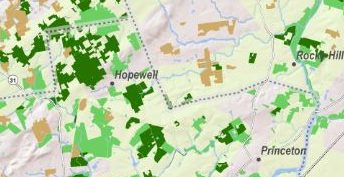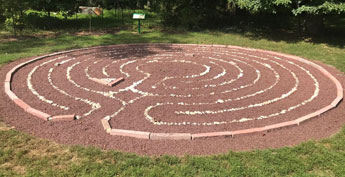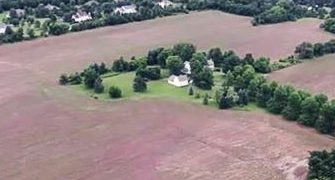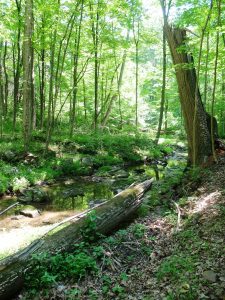One Critical Acre Gives Shape to Preservation of Cultural Heritage
In a state of 4.492 million acres, how significant can one acre be? The answer—in the case of the William Peters property—is that a single acre is important enough for D&R Greenway to take on a most unusual role in order to preserve it. The newly preserved Peters site opens the way for a trail that will draw attention to a nearly forgotten settlement: Honey Hollow, in Hopewell Township.
 William Peters’ stone house along Church Road, between Washington Crossing State Park and Mercer County’s Ted Stiles Preserve at Baldpate Mountain, dates to General George Washington’s historic river crossing. A smaller-scale water crossing brought the
William Peters’ stone house along Church Road, between Washington Crossing State Park and Mercer County’s Ted Stiles Preserve at Baldpate Mountain, dates to General George Washington’s historic river crossing. A smaller-scale water crossing brought the
possibility of preservation of the Peters property to the forefront.
Former D&R Greenway Board Chair Alan Hershey was reconnoitering along Fiddler’s Creek while designing the southeastern section of the Fiddler’s Creek Preserve trail. Alan recalls, “The existing hunters’ bridge was inadequate and would become dangerous. I suggested to Mercer County that we acquire a sliver of land from Mr. Peters so we could bend the route of the trail to the stone abutments of the old bridge on Honey Hollow Road.”
Mercer County began discussions with the landowner, but they reached an impasse.
That was when D&R Greenway agreed to step in, taking on the not-unusual role as preservation facilitator—but with the atypical responsibility of acting as seller’s representative. With Trustee Christopher DeGrezia of law firm Drinker Biddle representing Mr. Peters, agreement was reached for the County to acquire his one acre in November 2016.
D&R Greenway Vice President Jay Watson explains why D&R Greenway decided to get involved. “Many people in the preservation community tend to focus on preserving large tracts of land, but we cannot miss the opportunity to have that small transaction that makes a critical link or preserves a unique opportunity or habitat.”
Adding one acre to the Baldpate Mountain Preserve will enable the historic, abandoned Honey Hollow Road to be connected to the trail system. The old stone bridge abutments will be left as a visible link to the past, although a modern, sturdy bridge will actually carry the new trail over the creek. There are now 12 miles of trails in the Baldpate Preserve, and 2 miles in the neighboring Fiddler’s Creek Preserve.
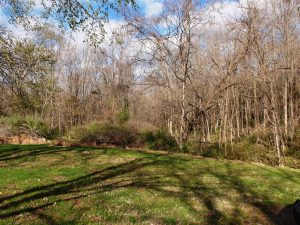
Honey Hollow Road, vacated in 1944, was once the main thoroughfare for the settlement of Honey Hollow, which exists today only on old maps and as remnant building ruins hidden in the mountain’s woods. The road went from Church Road (named for a now-vanished church) up the side of what was then called Canoe Mountain, to the ridgetop where it met Pleasant Valley Road.
Folklore implies that Honey Hollow was the home of “free Blacks” beginning in the late 19th century, remaining vital until the 20th century. Henry Charlton Beck wrote of encountering Honey Hollow’s ruins, “broken walls with trees and brambles growing from the inside,” in his 1936 book, Fare to Midlands (republished in 1962 as The Jersey Midlands). Beck reported on his encounter with one Andy Williams, “a colored man” who had moved from “up the mountain” to farm on the edge of the State Park. According to Beck, Andy Williams recalled, “There was quite a settlement of colored people all in the Hollow there. Sure, they owned the places they lived in but they just moved away and left ’em when farmin’ got too hard or they want to be in the city too strong.” Other traditions (also duly noted by Beck) suggest that moonshiners took advantage of the thick woods to install stills in the ruined houses.
Who were the residents of the Hollow and what is the real explanation for the abandonment? And what was life like for its residents during the decades that it flourished? Mercer County recently engaged Hunter Research to perform historical and genealogical research to separate out fact from lore and discover more about the story of Honey Hollow.
“We have heard the lore of this settlement for a long time and engaging Hunter Research will provide provenance for a unique story on the mountain. “It is our collective hope to provide interpretive signage explaining this unique community and diversify the stories told in our landscape,” says Jay.
“The richness of Mercer County’s history cannot be overstated,” said Mercer County Executive Brian Hughes, “and it’s truly exciting to discover the heritage of this settlement and its people. Our ultimate goal is to share the story of these early settlers and how they helped shape this great county.”

